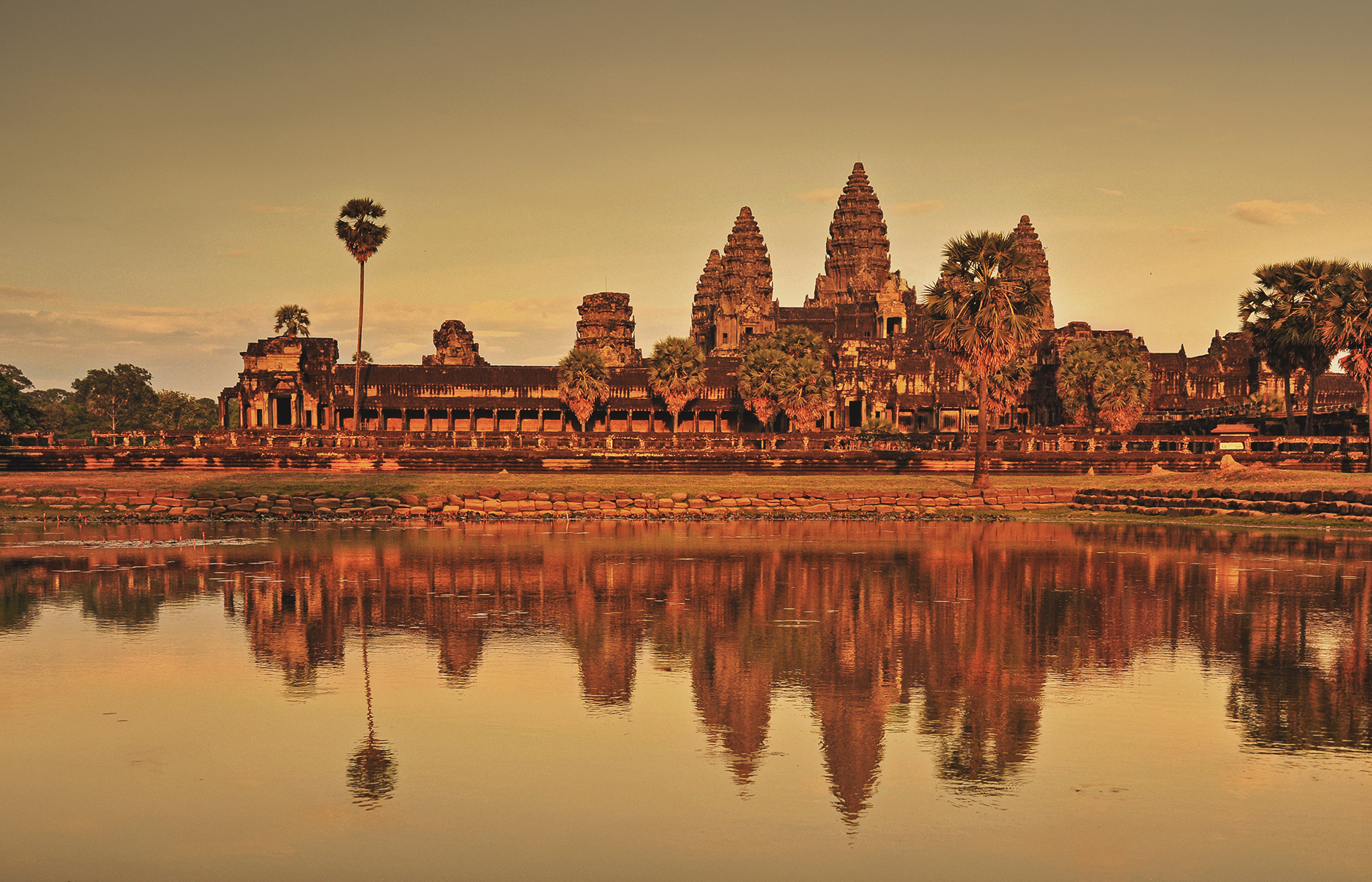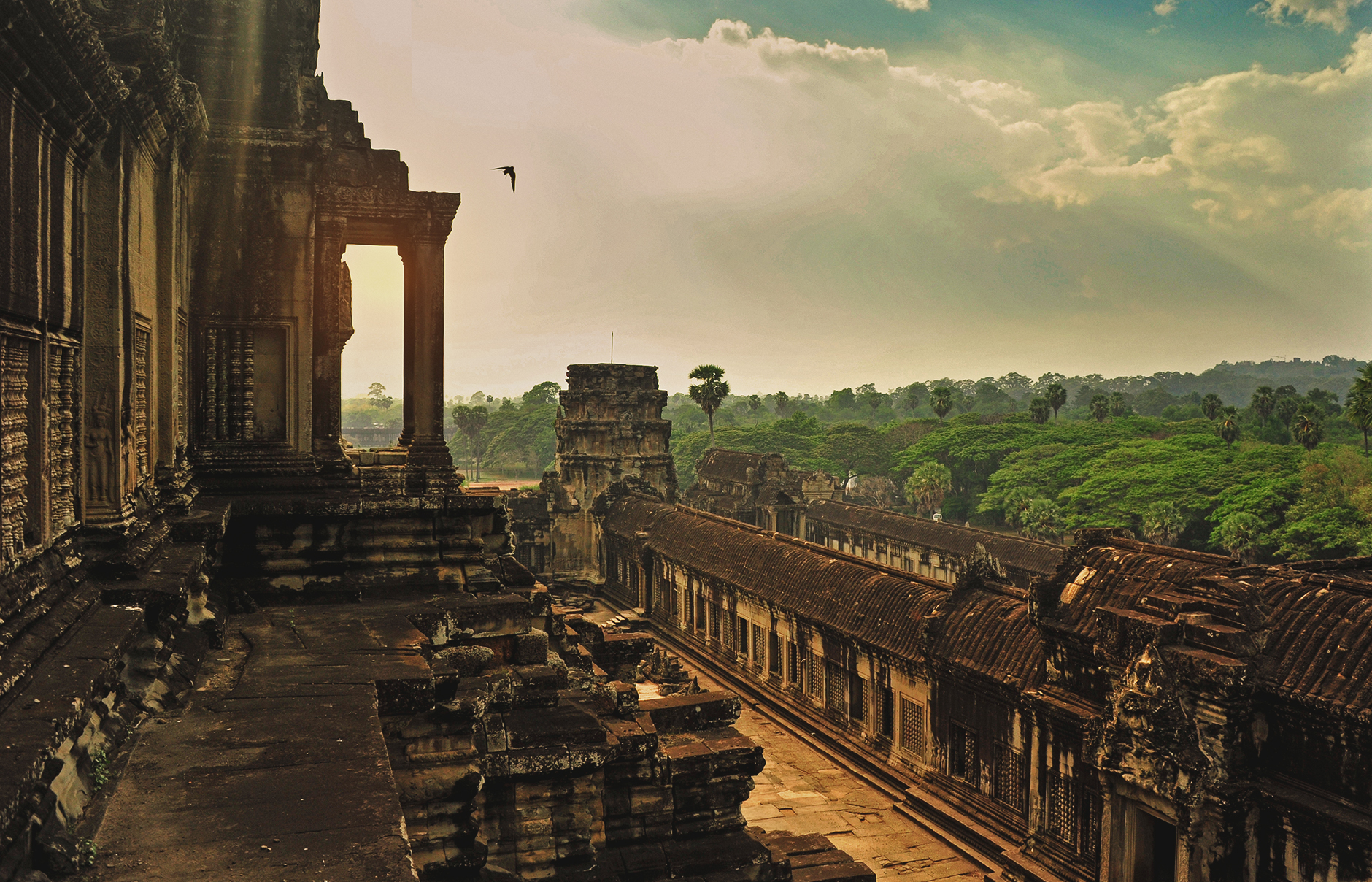

So what’s the best time to visit Angkor Wat? The secret is to find the site at its quietest, take your time and reflect, linger amid the ruins, and observe how the same stones tell different stories in different light.
→ Wondering where to stay?
Check our list of The Best Luxury and Boutique Hotels in Siem Reap
→ If you’re planning to explore beyond Angkor Wat, don’t miss our Top 11 Things to Do in Siem Reap, Cambodia — a curated guide to temples, local culture, and the best ways to experience this fascinating city.
*This post contains affiliate links from which we may earn a commission, at no extra cost to you.
All photos in this post are by Laskowski & Zadros. © TravelPlusStyle.com.
Tourists tend to follow the same scenario: arrive by 5 a.m., stake a spot by the reflection pond, and try to capture the “iconic” sunrise shot. Being here for the sunrise is very popular; it means that this ritual has turned into a shared commute: every morning, hundreds scrunch together for the same frame.
To be fair, Angkor Wat really is a marvel at the break of the day, as soft mist drifts over lotus ponds, and the temple complex emerges from the inky darkness. So if you are in Siem Reap for a few days—and especially if you pick a hotel close to the temple complex (e.g., at Amansara)—it is still worth doing this once. There is another way, though.
Book your temple pass in advance here to avoid the ticket line and start your visit relaxed.

Having experienced Angkor Wat at different times of the day, we say: skip the photo scrum. Come here after sunrise, between 7 a.m. and 9 a.m. By then, many tour groups would have moved on, and the early-morning lull offers a chance to reflect on the deep stillness in stone. This is when the temple grounds are quieter and more contemplative.
“The soft morning light illuminates the intricate carvings, and the gentle warmth of the sun highlights the bas-reliefs without the harsh shadows that can obscure details during sunrise.”
Walking along the outer galleries and around the reflection ponds, you’ll often have space to pause, photograph, or absorb the atmosphere, often alone. Monks in saffron robes may pass silently through the courtyards, and the morning air carries the faint scent of incense from the temple shrines—a serene reminder of centuries of devotion.
It’s a good time to explore secondary courtyards and corners often missed during the sunrise rush. By lingering through the morning, you can experience Angkor Wat in a way that’s far more personal, capturing its stillness, history, and subtle beauty.
“Arrive in the late afternoon and linger through the golden hour; stay on, and you will experience the temples at sunset, when the ancient stones slowly disappear in the darkening shadows.”
Sunrise can be dramatic, but the sharp contrast of the sky aflame and temple towers sharply reflected in the ponds makes them mere silhouettes.
For a different experience, visit in the late afternoon, roughly between 3 and 6 p.m. It’s the quieter time, with fewer visitors, and it’s when the warm, golden rays illuminate the western façade, bringing the temple’s intricate details to life. The stone, no longer a mere silhouetted outline, becomes a library of gestures: dancers mid-step, gods with watchful mouths, apsaras caught between smile and motion.


Where to Stay in Style in Siem Reap, Cambodia
So, when is the best time to visit Angkor Wat? We say: skip the routine; make a plan that lets you experience Angkor Wat on your terms. Here are some ideas:
Most importantly, see Angkor Wat not to tick it off your list. Take your time, and seek the moments when the light, the stone, and the quiet combine into the perfect choreography for sightseeing.
*All photos in this post are by Laskowski & Zadros. © TravelPlusStyle.com.

Getting there: The flight-comparison sites such as Skyscanner (www.skyscanner.com) or Kayak (www.kayak.com) will help you find the best flights and deals.
*This post contains affiliate links and we may earn a commission, at no extra cost to you.
Author: Travel+Style. Last updated: 01/11/2025